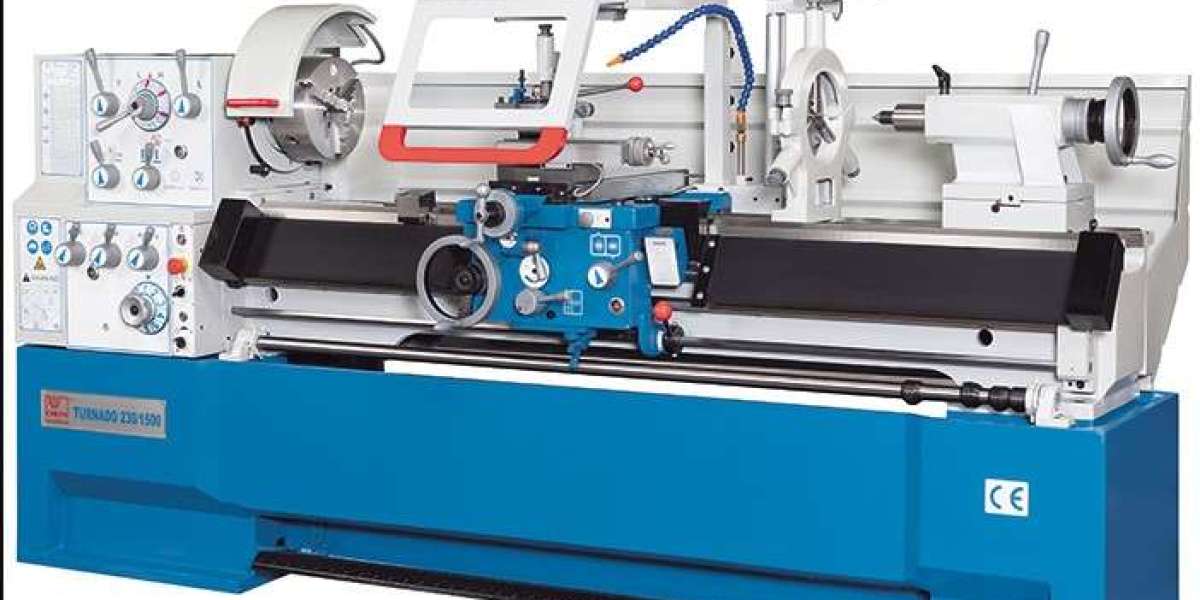Conventional Turning Lathe Machines: Precision Tools for Traditional Machining
In the world of manufacturing and metalworking, the Conventional Turning Lathe Machine remains one of the most essential and widely used tools. Though CNC (Computer Numerical Control) machines have gained popularity in modern workshops, conventional lathes continue to play a crucial role due to their simplicity, versatility, and reliability. These machines are perfect for both skilled machinists and learners alike, providing hands-on control and understanding of the turning process.
What is a Conventional Turning Lathe Machine?
A turning lathe machine is a mechanical device used to rotate a workpiece against a cutting tool to remove material and shape it into the desired form. The term "conventional" refers to manual operation—meaning the machine is operated by a human, without the automation provided by CNC technology.
These machines are commonly used to perform turning, facing, thread cutting, boring, drilling, and knurling operations on cylindrical or conical components.
Main Components of a Conventional Lathe
Understanding the basic parts of a lathe helps to appreciate its function and capabilities:
Bed: The base of the machine that supports all components.
Headstock: Located on the left side of the machine, it houses the main spindle and motor.
Tailstock: Positioned on the right side, it supports the other end of the workpiece during machining.
Carriage: Moves the cutting tool along the bed; includes the cross-slide, tool post, and saddle.
Chuck: The clamping device that holds the workpiece.
Lead Screw and Feed Rod: Used for threading and automatic feed movement.
How a Lathe Machine Works
The operation of a conventional lathe is straightforward:
The workpiece is mounted and clamped into the chuck or between centers.
The spindle rotates the workpiece at a selected speed.
The machinist positions the cutting tool against the rotating part using the carriage and cross-slide.
Material is removed in the form of chips to create the desired shape.
Because it’s manually operated, the machinist must control tool position, cutting depth, speed, and feed rate, requiring skill and precision.
Types of Conventional Turning Lathes
There are several types of conventional lathes, categorized based on size, function, and design:
1. Engine Lathe
The most common and versatile type
Suitable for a wide range of turning operations
Available in light-duty, medium-duty, and heavy-duty versions
2. Bench Lathe
Smaller and designed for light, precise work
Often used in tool rooms, repair shops, and educational settings
3. Toolroom Lathe
High precision with fine control
Used for tooling, die making, and prototyping
4. Gap Bed Lathe
Designed with a removable section in the bed for turning large-diameter workpieces
5. Turret Lathe
Equipped with a turret tool post that holds multiple tools
Increases productivity by reducing tool change time
Benefits of Conventional Lathe Machines
1. Cost-Effective
Conventional lathes are generally more affordable than CNC machines, making them ideal for small workshops and educational institutions.
2. Simple to Use
They don’t require programming knowledge. Machinists can easily learn the operations through hands-on training.
3. Great for Custom or One-Off Jobs
When working on prototypes, repairs, or custom parts, conventional lathes offer fast and flexible setup.
4. Durable and Long-Lasting
These machines are built with robust materials and can last for decades with proper maintenance.
5. Ideal for Training and Skill Development
Learning to operate a manual lathe provides a solid foundation in machining, essential for understanding more advanced tools like CNC machines.
Applications of Conventional Lathes
Conventional lathe machines are used in a wide variety of industries:
Metalworking shops: Producing and repairing shafts, bushings, bolts, and more
Automotive: Turning brake drums, engine parts, or axles
Aerospace: Machining aluminum and titanium components
Woodworking: Shaping and detailing cylindrical wooden parts
Education and Training: Teaching students and apprentices machining basics
Key Considerations When Choosing a Conventional Lathe
When selecting a lathe for your workshop, consider the following:
Swing Over Bed: The maximum diameter of the workpiece that can be turned
Distance Between Centers: Determines the maximum length of the workpiece
Motor Power: Affects the machine’s ability to cut tough materials
Spindle Speeds: A wide range of speeds offers more flexibility for different materials and operations
Thread Cutting Capabilities: If you need to cut threads, ensure the machine supports both metric and imperial pitches
Build Quality and Rigidity: Heavy-duty cast iron construction is preferred for vibration resistance and precision
Maintenance Tips
Regular maintenance ensures long life and consistent performance:
Lubricate moving parts as per the manufacturer’s recommendations
Keep the bed and sliding surfaces clean and free from chips
Check belts, gears, and bearings for wear
Ensure the chuck and tailstock are properly aligned
Conclusion
The conventional turning lathe machine remains a cornerstone of machining, offering unmatched flexibility, control, and reliability. While CNC machines dominate high-volume production, conventional lathes are indispensable in custom work, maintenance, and training environments. Their ability to deliver precise, hands-on results at a relatively low cost makes them a valuable asset in any metalworking or manufacturing setting.
Whether you're a beginner learning the basics of machining or a professional fabricator tackling detailed turning tasks, the conventional lathe offers the power and precision needed to get the job done.














